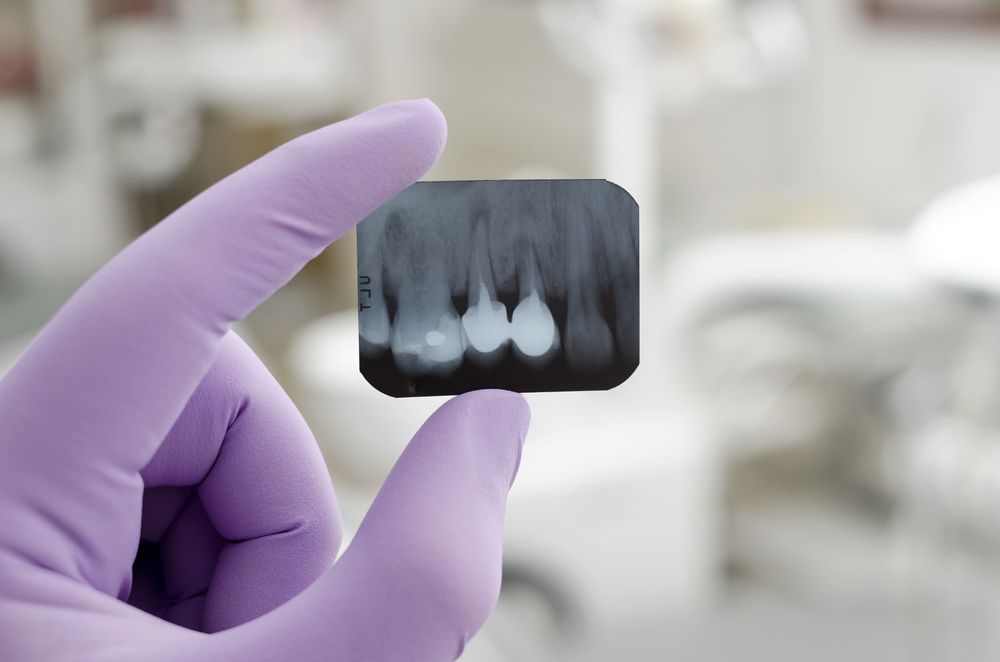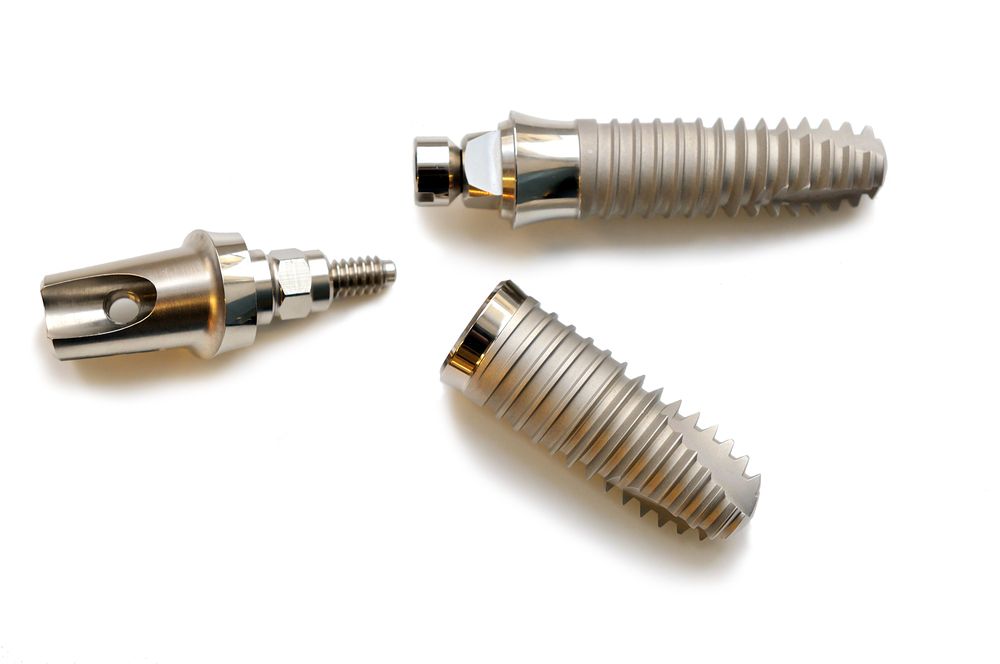Implants don’t get caries – this much is true. Still, you have to take good care of your ceramic replacements. Read up on the why and how!
Gum inflammations around implants are dangerous. Sensitivity towards acids – the only weak point of our otherwise perfectly robust natural tooth substance and the reason why our teeth succumb to caries – is not a problem with dental restorations made from ceramics. But that doesn’t mean implants will put your toothbrush out of work… On the contrary – it will probably get some new company: interdental brushes, Superfloss and specialized implant care brushes. Plaque can also form and stick on implant surfaces.
And if that biofilm consisting of bacteria, food residue and bacterial metabolic products is not thoroughly removed on a daily basis, inflammations of the surrounding gum tissue can and will happen – and gingivitis is more dangerous for implants than for natural teeth. Blood circulation in the gums around an implant is a little less active – and that means the body’s immune defense is somewhat weak here, too, and infections can establish more easily than around natural teeth. A second point is even more critical: Unlike a natural tooth that is held by a number of very robust connective tissue fibers, implants are not very firmly attached to the gingiva.


During an inflammation of the tissue around an implant, referred to as periimplantitis, the gums will easily separate from the implant. This may quickly lead to the formation of deep gingival pockets, followed by bacterial destruction of the periodontium. Bone loss may then hazard the stability of the entire implant construction.
Periimplantitis causes fast implant loss
As described, periimplantitis will usually take a much faster and more catastrophic course than “ordinary” periodontitis. If all attempts to stop the raging inflammation fail, implant loss may occur as early as one year or even less after the first signs of infection. Bacterial infections of the periodontal tissue are among the most frequent complications that may occur with dental implants.
A responsible implant treatment plan therefore includes frequent aftercare appointments that focus on periimplantitis prophylaxis and, if necessary, therapy, with meticulous home care forming the other pillar of periimplantitis prevention. The good news: This strategy works, as proven by the about 90 percent success rate of modern implant treatments.
Periimplantitis prevention: Home care and regular professional hygiene appointments
Your implants need a very thorough home care routine. This includes careful brushing with a soft toothbrush, and daily cleaning of the approachable implant parts under the crown. For this, you may use interdental brushes, threadable dental floss (Super floss) and/or one of the specialized brushes for implant and denture care (one-tufted brushes, brushes with one or two rows of bristles, angled brushes). Seek your dentist’s advice as to which of those hygiene instruments are the best fit for your individual situation!
To give your implants the best chance at healthy integration, you should take the quarterly implant maintenance care appointments at the dental office very seriously during the initial period after implantation. After about a year, a stable parodontal situation should be established. Then, it will be sufficient to schedule professional hygiene treatment every six months. We reward your responsible behaviour with an extension of our implant warranty to up to six years.

Prophylaxis starts before implantation
In the interest of the longterm success of your implant treatment, some important prevention measures are even taken prior to the implantation. We will perform a professional oral hygiene treatment and repair “trouble maker” teeth with active decay, broken, loose or otherwise less than perfect restorations. A microbiological analysis of your oral flora serves the specific purpose of ensuring your oral cavity is free of certain aggressive bacteria species that have been implicated in causing fast-progressing periimplantitis. Should we find those bacteria, we will start treatment with a targeted antibiotic. You will return for a check-up after eight weeks. In most cases, the antibiotic treatment succeeds in getting rid of the problematic germs, and we can proceed with the implantation treatment.
Professional implant hygiene
An implant maintenance care appointment starts with an examination of the gums around your implant or implants: redness, swelling and/or an increased tendency to bleed are signs of an inflammatory process. For cleaning your implants, we use specialized tools that remove plaque and other deposits from all approachable implant surfaces. Cleaning and disinfection of any exposed metal parts of the implant is particularly demanding: These metal surfaces have been roughened to improve bone integration – and the tiny surface irregularities may now harbor bacteria. Further, it is essential to remove all residue of the cement that has been used to fasten the implant crown to the abutment, as studies have shown this cement to be a major risk factor for periimplantitis development.
Hand tools for implant cleaning are not made from metal, as the hard material might scratch the ceramic surfaces, but from plastic, teflon or even carbon. If ultrasound intruments are used, they are also outfitted with plastic attachments. Lots of water or antibacterial solution are used to flush and suction the loosened deposits out of your mouth. Antibacterial treatment options for deep, infected gingival pockets are laser treatment and the so-called photodynamic disinfection. The latter involves the introduction of a photosensitizing agent into the gingival pockets, followed by light exposure that creates toxins and thus kills all bacteria hiding in there.
The first year is crucial for implant success!
Exerience has shown that the first year with implants is critical for long-term treatment success. Meet the challenges of these first twelve months, and keep the quarterly maintenance care appointments! After your implants have made it through the first year in good shape, chances are excellent for you to use them without any trouble for many years, even decades to come.
